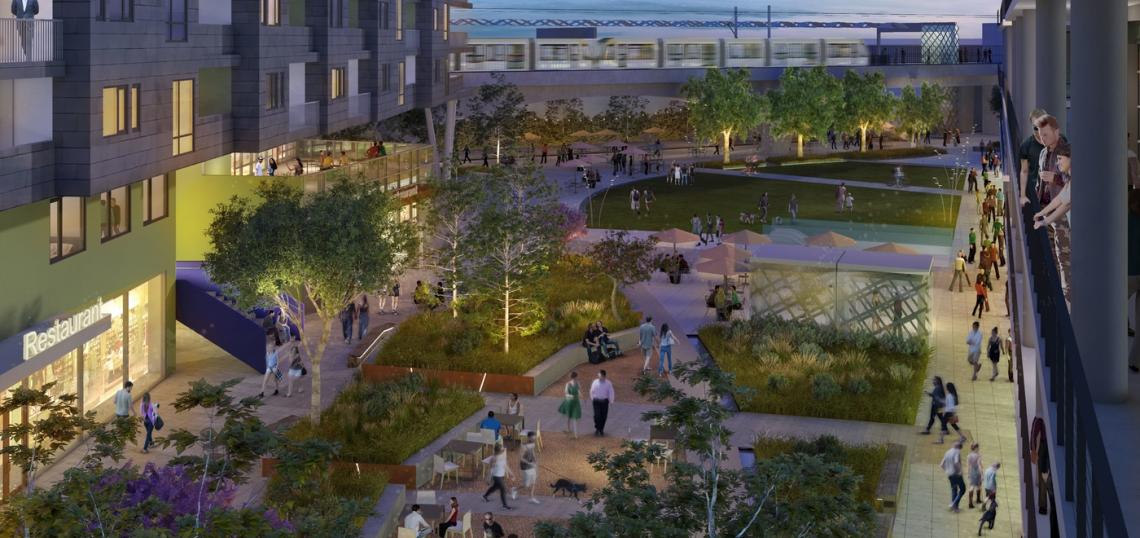In conjunction with the completion of the first phase of the Expo Line in 2012, Culver City looked to take advantage of its new Metro station by spurring development on nearby properties. The ensuing T.O.D. district resulted in numerous projects, including Access Culver City, the Platform, 8777 Washington and Ivy Station.
As a follow up to this effort, Culver City is now attempting to build upon the transit oriented district with a study of mobility and circulation in the surrounding community, with a particular focus on Washington Boulevard.
According to urban designer David Alpaugh of Johnson Fain, who is working on the project, the study signifies a growing recognition of mobility issues in Culver City. The city currently sees approximately 70,000 daily car trips into the city, mainly for employment - roughly twice its residential population. These commuters traverse a road network that Alpaugh describes as an "incomprehensible web," with east-west circulation pinched into the center of town before spreading back out.
Construction of the Expo Line exacerbated an existing problem by walling off the neighborhood located north of the train's right-of-way, limiting automobile access to one major street: Washington Boulevard. As a consequence, new development over the past several years has raised concerns among residents of this neighborhood - known as the Culver City Arts District - who have questioned its potential impacts.
Culver City has responded to these questions by looking at a variety of possible strategies, including traffic calming measures, revisions to key intersections, and exploring first-and-last mile connections. This could involve re-envisioning Washington Boulevard as a destination street, rather than an avenue for crosstown traffic. In addition to stimulating new investment along the corridor, this could also mean turning Washington into a complete street featuring bike lanes and possibly an exclusive transit lane.
Beyond Washington Boulevard, the study also outlines measures that Culver City may take in the immediate future, as well as in the long term through the implementation of its new general plan over the next few years. According to Alpaugh, Johnson Fain's approach has been to think of the city as a transit oriented community, rather than simply focusing on the small district surrounding the station.
One potential result of the study could be changes to the existing T.O.D. ordinance. Many issues of relevance to development and mobility are not addressed in the ordinance, including parking. In other words: is Culver City requiring too much of it, or rather not enough?
Culver City may also consider a city-wide transportation demand management program, as has already been implemented in Santa Monica. This strategy involves coordinating with various employers in the city to manage automobile trips, with consideration to peak travel times.
Due to its central location between the residential base of the Eastside and the job center of the Westside, Culver City also sees significant "cut-through" traffic. Additionally, the city is home to numerous job centers that are not located within its transit center - including Culver Pointe, the Hayden Tract and the Jefferson Corridor. Alpaugh notes that none of these employment districts currently feature housing, which could provide better balance on the city's traffic rush.
A final workshop will be held on Wednesday, July 19 to present the final recommendations of the study.
More information is available at the project's official website.






